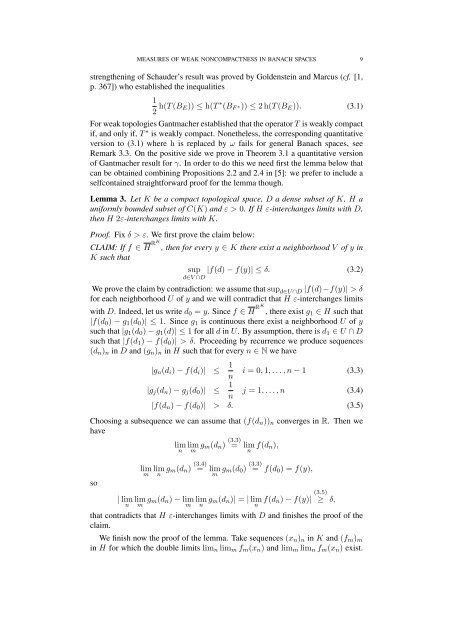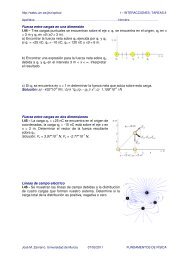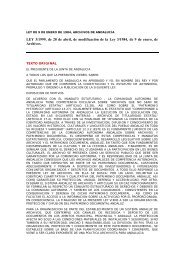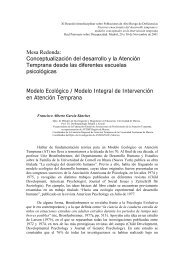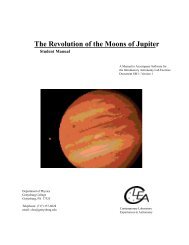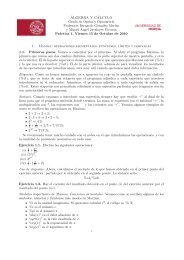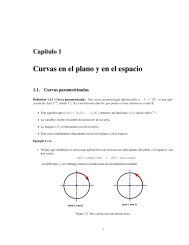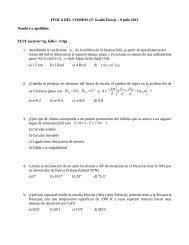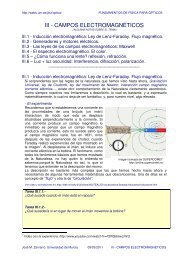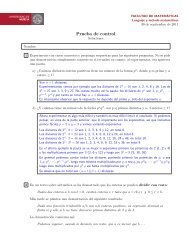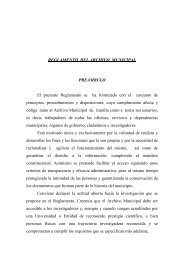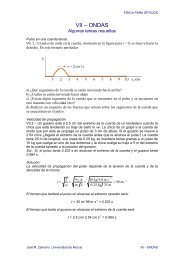MEASURES OF WEAK NONCOMPACTNESS IN BANACH SPACES ...
MEASURES OF WEAK NONCOMPACTNESS IN BANACH SPACES ...
MEASURES OF WEAK NONCOMPACTNESS IN BANACH SPACES ...
You also want an ePaper? Increase the reach of your titles
YUMPU automatically turns print PDFs into web optimized ePapers that Google loves.
<strong>MEASURES</strong> <strong>OF</strong> <strong>WEAK</strong> <strong>NONCOMPACTNESS</strong> <strong>IN</strong> <strong>BANACH</strong> <strong>SPACES</strong> 9<br />
strengthening of Schauder’s result was proved by Goldenstein and Marcus (cf. [1,<br />
p. 367]) who established the inequalities<br />
1<br />
2 h(T (B E)) ≤ h(T ∗ (B F ∗)) ≤ 2 h(T (B E )). (3.1)<br />
For weak topologies Gantmacher established that the operator T is weakly compact<br />
if, and only if, T ∗ is weakly compact. Nonetheless, the corresponding quantitative<br />
version to (3.1) where h is replaced by ω fails for general Banach spaces, see<br />
Remark 3.3. On the positive side we prove in Theorem 3.1 a quantitative version<br />
of Gantmacher result for γ. In order to do this we need first the lemma below that<br />
can be obtained combining Propositions 2.2 and 2.4 in [5]: we prefer to include a<br />
selfcontained straightforward proof for the lemma though.<br />
Lemma 3. Let K be a compact topological space, D a dense subset of K, H a<br />
uniformly bounded subset of C(K) and ε > 0. If H ε-interchanges limits with D,<br />
then H 2ε-interchanges limits with K.<br />
Proof. Fix δ > ε. We first prove the claim below:<br />
CLAIM: If f ∈ H RK , then for every y ∈ K there exist a neighborhood V of y in<br />
K such that<br />
sup |f(d) − f(y)| ≤ δ. (3.2)<br />
d∈V ∩D<br />
We prove the claim by contradiction: we assume that sup d∈U∩D |f(d)−f(y)| > δ<br />
for each neighborhood U of y and we will contradict that H ε-interchanges limits<br />
with D. Indeed, let us write d 0 = y. Since f ∈ H RK , there exist g 1 ∈ H such that<br />
|f(d 0 ) − g 1 (d 0 )| ≤ 1. Since g 1 is continuous there exist a neighborhood U of y<br />
such that |g 1 (d 0 ) − g 1 (d)| ≤ 1 for all d in U. By assumption, there is d 1 ∈ U ∩ D<br />
such that |f(d 1 ) − f(d 0 )| > δ. Proceeding by recurrence we produce sequences<br />
(d n ) n in D and (g n ) n in H such that for every n ∈ N we have<br />
|g n (d i ) − f(d i )| ≤ 1 n<br />
i = 0, 1, . . . , n − 1 (3.3)<br />
|g j (d n ) − g j (d 0 )| ≤ 1 n<br />
j = 1, . . . , n (3.4)<br />
|f(d n ) − f(d 0 )| > δ. (3.5)<br />
Choosing a subsequence we can assume that (f(d n )) n converges in R. Then we<br />
have<br />
lim lim g m (d n ) (3.3)<br />
= lim f(d n ),<br />
n m n<br />
so<br />
lim<br />
m<br />
lim<br />
n<br />
g m (d n ) (3.4)<br />
= lim<br />
m<br />
g m (d 0 ) (3.3)<br />
= f(d 0 ) = f(y),<br />
| lim<br />
n<br />
lim<br />
m<br />
g m (d n ) − lim<br />
m<br />
lim<br />
n<br />
g m (d n )| = | lim<br />
n<br />
f(d n ) − f(y)| (3.5)<br />
≥ δ,<br />
that contradicts that H ε-interchanges limits with D and finishes the proof of the<br />
claim.<br />
We finish now the proof of the lemma. Take sequences (x n ) n in K and (f m ) m<br />
in H for which the double limits lim n lim m f m (x n ) and lim m lim n f m (x n ) exist.


